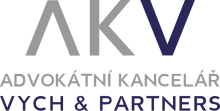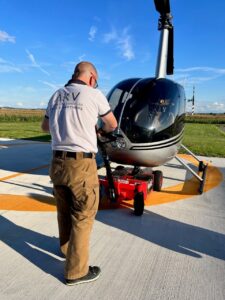The most beautiful view of the world is said to be from the back of a horse. I haven't tried that yet, for me the best view of the world is from a small plane or - in my case - from the cockpit of a helicopter. Sightseeing flights by helicopter are a frequent and grateful addition to various sports or cultural events organized by various associations.
For airlines, sightseeing flights are an interesting way to make themselves known to the public. Let's break down what the legislative requirements are for conducting "sightseeing flights" so that the company that operates them does not run afoul of the legislation, which is particularly strict in the field of aviation.
The concept of "sightseeing flight" is unknown in national or European legislation. However, the phenomenon of sight-seeing flights is modified as a "familiarization flight". A familiarization flight is any short flight operated for payment or other consideration operated by a training organization referred to in Article 10a of Commission Regulation (EU) No. 1178/2011 or by an organization created for the purpose of promoting sport or recreational flying with the aim of recruiting new members or those interested in training.[1][2]
The essence of reconnaissance flights is that they can also be performed by an entity that does not hold a commercial air transport license, the basic purpose of which is to perform flights for third parties for a fee. Obtaining this license is quite difficult, which is evidenced by the fact that, for example, in the field of helicopter flying, only four entities have this license, which can thus be considered the top in their field in the Czech Republic. Likewise, operation in the commercial air transport regime is affected by a number of additional restrictions and obligations.
Article 6 paragraph 4a) letter c) COMMISSION REGULATION (EU) No. 965/2012 of 5 October 2012 laying down the technical requirements and administrative procedures relating to air traffic pursuant to Regulation (EC) No. 216/2008 of the European Parliament and of the Council (the AOC Regulation) stipulates that without meeting the requirements of Article 5, paragraphs 1 and 6 (i.e. not in accordance with the rules for commercial air transport), in accordance with Annex VII, familiarization flights may be carried out with other than complex motor-powered aircraft and helicopters, carried out either by a training organization whose main the place of business is located in a Member State and which is referred to in Article 10a of Regulation (EU) No. 1178/2011, or an organization created for the purpose of promoting sport or recreational flying, provided that the organization operates the aircraft on the basis of ownership or lease/ dry lease, that the flight does not generate a profit paid outside the organization and that flights involving persons who are not members of the organization are only peripheral activities of the organization.
According to the provisions of ARO.OPS.300 of Annex II of the aforementioned regulation, the national authority (in our case the Civil Aviation Authority, hereinafter referred to as the "Authority") may set additional conditions for reconnaissance flights carried out on the territory of a Member State. These conditions must be reasonable and guarantee safe operation. The Authority specified these conditions in the regulation CAA-SL-102-6-16 "Conditions for conducting reconnaissance flights according to Article 6, paragraph 4a, letter c) Regulation (EU) No. 965/2012, Article 3, paragraph 2, letter c) Regulation (EU) 2018/1976 and Article 3, paragraph 2, letter c) Regulation (EU) 2018/395".
Which flight is sightseeing or dating?
First of all, it must be a short flight. The regulations do not state anywhere what is the maximum length of a flight in order to qualify it as short. In this context, the requirement of the regulation, CAA-SL-102-6-16, that it must be a flight that starts and ends at the same airport or the same operating location, seems reasonable.[3] This requirement seems quite logical, since the purpose of the familiarization flight should not be to transport the passenger from place A to place B, but to allow him to taste the beauty of flying by plane or helicopter. According to the announcement of the Civil Aviation Authority, it does not define the maximum length of flight that meets the definition of a "short flight", unlike some other EASA member states.[4] It is up to the entity that operates the flight how long the sightseeing flight will last, so it is possible to offer and sell flights of different lengths.
Which entities can conduct sightseeing flights?
It is also appropriate to deal with entities that are authorized to conduct familiarization flights. Regulation CAA-SL-102-6-16 following Article 6 paragraph 4a) letter c) COMMISSION REGULATION (EU) No. 965/2012 of 5 October 2012 stipulates that:
"Familiarity flights referred to in paragraph 1.1 may only be performed by:
– a training organization approved under Regulation (EU) No. 1178/2011 (hereinafter ATO), or
– notified training organizations according to Regulation (EU) No. 1178/2011 (DTO), or
– an organization created for the purpose of promoting sport or recreational flying
provided that the principal place of business of the organization is in a Member State and the organization operates the aircraft on an ownership or lease/lease basis, that the flight does not generate a profit paid outside the organization and that flights involving persons who are not members of the organization, they represent only the marginal activity of the organization."
And here, in the opinion of the author, there is an inaccurate transcription of Article 6, paragraph 4a) letter c) of the aforementioned regulation, which stipulates that:
"acquaintance flights, ... performed either by a training organization whose main place of business is located in a Member State and which is listed in Article 10a of Regulation (EU) No. 1178/2011, or by an organization created for the purpose of promoting sport or recreational flying, provided that the organization operates the aircraft on an owned or lease/lease basis, that the flight does not generate a profit paid outside the organization, and that flights involving persons who are not members of the organization constitute only a peripheral activity of the organization.'
So, first of all, the European connection regulation "whose main place of business is located in a Member State" in the opinion of the author, it applies only to ATO and DTO, not to an organization created for the purpose of promoting sports aviation. But that is probably not the main problem of the given provision.
I consider the main interpretative problem of the given provision to be the part that stipulates that: "the flights do not generate a profit paid outside the organization and that the flights attended by persons who are not members of the organization represent only a marginal activity of the organization.'
Does what has just been mentioned only apply to organizations established for the purpose of promoting sports or recreational flying, or does it also apply to aviation schools (ATO, DTO), as stated by the Office's regulation? I am inclined to conclude that the interpretation is that this part of the provision applies only to organizations established for the promotion of sports or recreational flying. Aviation schools are, in the overwhelming majority of cases, business entities. As such, they are established for the purpose of making a profit. If it makes a profit, it is up to the partners of such an entity whether the profit will be paid out or retained in the company. Aviation regulations are not designed to prevent business entities from paying a profit. In addition, it is not possible for the general meeting of a business corporation to decide that a part of the profit related to activities other than reconnaissance flights will be paid out, while the profit related to reconnaissance flights will not be paid out, as the accounting regulations do not allow profit to be reported analytically for approval by individual activities, or . they do not allow the general meeting to decide that the profit from activity "A" will be paid, while the profit from activity "B" will not be paid; it is possible to decide only on the payment of a part of the profit as a whole.
Furthermore, I have doubts about the correct interpretation of the Office of the Parties as to which entities and to what extent they can conduct reconnaissance flights in parts of the provisions of the regulation "flights in which persons who are not members of the organization take part represent only a peripheral activity of the organization.'
If we think about the nature of the organization of a corporation that runs an aviation school, typically a limited liability company, it is obvious that the members of this corporation are only its partners or only one partner. All other persons stand outside the corporate structure of the given company, so in my opinion it is pointless to think of members as users of the services (flying) of the given corporation and it can be assumed that, to a limited extent, all persons will only be customers of the given flying school, not its members .
In contrast, for an organization established primarily for the purpose of promoting sport or recreational flying, typically an aero club, the membership base of such an organization is essential. Participation in the activities of such an entity is thus based on the principle of (open) membership. Therefore, in my opinion, it is only here that it is appropriate to talk about the fact that the provision of services outside the membership base should only be marginal, while this does not make sense in the case of a commercial flight school.
After all, this conclusion also follows from the Decision of the Executive Director of the Agency No. 2014/019/R of April 24, 2014, which adopts the explanatory material for Regulation (EU) No. 965/2012, according to which "Organization formed for the promotion of sport or recreational flying" means a non-profit organization established under applicable national law solely for the purpose of bringing together persons sharing common interests in general aviation who fly for pleasure or perform skydiving. The organization should have aircraft at its disposal.'
I conclude that, in my opinion, the condition that "the flights do not generate a profit paid outside the organization and that the flights attended by persons who are not members of the organization constitute only a marginal activity of the organization.'' applies only to aero clubs, conversely, if a familiarization flight is operated by an ATO or DTO, the flight may be operated at a profit and the profit may be paid to the ATO or DTO members.
Whether the conclusion just stated is correct or not, it is appropriate to further consider what is meant by "marginal activity". Regulation CAA-SL-102-6-16 stipulates that marginal activity should be understood as an activity that represents a very small part of the overall activity of the organization, should serve mainly to promote the organization itself and/or reach out to new students or members.
The last amendment of the Authority's directive (CAA-SL-102-6-16) included the provision of point 3.1.3, according to which organizations conducting reconnaissance flights shall implement a system of records of reconnaissance flights so that they can prove, at the request of the Authority, that they meet the condition of marginal activity. Furthermore, they must be able to demonstrate that the profit from these flights is not paid outside the organization. Organizations are obliged to provide information on the number of hours flown in familiarization flights by filling in the relevant form published on the website of the Office for the past calendar year by January 31 of the following year. The Office will check the recorded data as part of ongoing supervision.
There is no closer specification of "marginal activity" by the Office, according to its communication, the Office has not yet been forced to proceed with the quantification of the marginality of the activity, for example, as a percentage of the hours flown.
How many people are allowed to participate in the sightseeing flight?
I have come across a question as to whether there is a limit to the number of people on board a plane that makes a sightseeing flight. The question is based on the consideration that if the purpose of the familiarization flight is to get new people interested in flying, such an eligible person is only an (adult) person who during the flight under the supervision of the pilot tries to control the aircraft, then logically there can be only one such person on board . Czech regulations do not contain any such restrictions, and the number of persons is limited by the level of qualification of the pilot conducting the flight (see below). However, there are also jurisdictions that contain this restriction, for example the already mentioned Hungary, where it is stipulated that only two people can be on board an aircraft performing a reconnaissance flight, i.e. a pilot in command (PIC) + one passenger.
Who is eligible to pilot reconnaissance flights?
The answer would be that only a "professional pilot", i.e. a pilot with the minimum qualification of a commercial pilot of airplanes/helicopters - CPL (A/H). However, this is not the case, the relevant regulation of the Office stipulates that familiarization flights can also be carried out with lower levels of qualification, i.e. typically PPL (A/H), provided that the pilot has fulfilled the limits of the number of hours flown. In the case of sightseeing flights carried out by airplanes / helicopters, a minimum flight time of 200 hours is required, including at least 100 hours as PIC. I leave it to the reader to decide whether this is a lot or a little. Personally, I think the regulation found in the already mentioned Hungary, according to which a pilot conducting reconnaissance flights must hold at least a flight instructor's license (FI), is more suitable. Although I personally have always felt that it is not necessary to spend so many hours to obtain this qualification, it is an advantage that the person who obtained the FI license went through the next level of training and examination after completing the initial PPL training.
If a person who holds only a PPL license will perform the familiarization flight, the range of rights that this license gives must not be overlooked, when according to FCL.205.A PPL(A) or FCL.205.H PPL(H) these persons can only act as pilot-in-command free of charge (with the exception of holders of the rights of flight instructor or flight examiner (FI or FE), when instructor or examiner activities can be remunerated). This must be taken into account if the organization that conducts sightseeing flights intends to remunerate a pilot with a PPL license for conducting them.
Some additional conditions for conducting reconnaissance flights
For some other conditions, only telegraphically, they can be found in the aforementioned regulation CAA-SL-102-6-16. Reconnaissance flights by airplanes and gliders must be conducted only from approved aerodromes; reconnaissance flights by helicopter may be conducted outside these airports, but may not be conducted over inhospitable environments.[5]
During all flights, a permanent two-way connection with the AFIS, ŘLP or RADIO service station must be maintained, and in case of loss of connection, the flight must be terminated immediately by returning to the take-off point. If flights are conducted from operating locations that are inside the ATZ, CTR, TMA, coordination with the AFIS, ŘLP or RADIO service station must be ensured; however, compared to the previous requirement, it is no longer necessary to publish a navigation warning in the form of a NOTAM.
Acquaintance flights must be carried out without sharp maneuvers, taking into account the safety of passengers, turns with an inclination of more than 30 degrees and acrobatic turns must not be performed.
The person responsible for conducting familiarization flights is obliged to ensure a sufficient number of persons over the age of 18 who assist in the organization of these flights and ensure the movement of passengers to and from the aircraft (one escort person is recommended for each boarding side of the aircraft / helicopter, ideally then - especially for helicopters - one person for each seat occupied by a passenger).
Opening the aircraft cabin, boarding and disembarking passengers will only be possible after the aircraft engine has completely stopped (for multi-engined aircraft, at least one engine) or, in the case of helicopters, after the rotor has stopped completely, unless otherwise specified in the helicopter flight manual. If the manual is silent, it is necessary to wait until the rotor comes to a complete stop. [6]I recommend checking this fact carefully, as starting and stopping the helicopter is associated with expensive operating minutes.
Appropriate records must be kept of the persons who participated in the familiarization flight in paper or electronic form, and the organization keeps it for at least 3 months after the sightseeing flight.
Control of compliance with the conditions by the Office
As already mentioned above, familiarization flights are now subject to the reporting of the number of hours flown via the website of the Office, as a basis for assessing whether the condition of "marginality" has been met. According to the Office's communication, it follows from its ongoing control activities that the controlled persons have the biggest problem with keeping records of reconnaissance flights within the aircraft logbooks and pilots' flight notebooks; however, no serious violations of legal regulations have yet been identified by such controls.
Finally
With this article, I tried to clarify the main requirements for conducting reconnaissance flights. In my practice as a lawyer and as a hobby pilot, I have come across a number of myths and ambiguities at some airlines, which sometimes unnecessarily prevented them from carrying out these flights, and in other cases caused the possibility of a conflict with the legal regulations governing the conditions for carrying out these flights. I hope to contribute to higher legal awareness on this issue and the further development of these flights, which I personally consider very beneficial.
Happy landings!
Source: epravo.cz

JUDr. Ing. Jan Vych, attorney
Note I thank Petra Štych (NISA Air), Petr Dolejšek (Harris Hawk) and David Švábek (HELITOM) for inspiration and comments on the text
[1] Article 2 point 9) COMMISSION REGULATION (EU) No. 965/2012 of 5 October 2012 establishing technical requirements and administrative procedures relating to air traffic pursuant to Regulation (EC) No. 216/2008 of the European Parliament and of the Council
[2] Familiar flight in this article does not mean "introductory flight", which as the first task is part of the training curriculum of applicants for a pilot's license
[3] Point 1.3. letter a) of regulation CAA-SL-102-4-16
[4] For example, the Hungarian regulator stipulates that it must be a maximum 30-minute flight with a maximum radius of 10 nautical miles from the take-off point.
[5] An inhospitable environment is defined by Regulation (EU) No. 965/2012 as an area in which:
i) a safe forced landing cannot be made because the surface is unsuitable, or
(ii) persons on board the helicopter cannot be adequately protected from the elements, or
iii) search and rescue response/capability is not ensured in accordance with the expected exposure (environmental impact), or
iv) endangering persons or property on the ground is unacceptable;
(b) in each case the following areas:
i) when operating over the waters of the high seas area located north of the 45th degree north latitude and south of the 45th degree south latitude, unless some part is designated as inhospitable by the authority of the state over whose territorial waters the operation takes place, and
ii) parts of a densely populated area without adequate areas for a safe forced landing.
[6] For example, the flight manual of the Robinson R44 helicopter, which is mostly used for sightseeing flights, as far as I know, does not contain an explicit provision about the possibility of boarding passengers with a rotating rotor. However, it stipulates that if a collective is installed next to the left front seat, passengers may only board with the engine running if the throttle is closed. From this it can be concluded that this helicopter allows passengers to board while the engine is rotating. In the case of the Guimbal Cabri helicopter, boarding and disembarking of passengers while the rotor is spinning is only possible if the wind is less than 20 kts including gusts.











